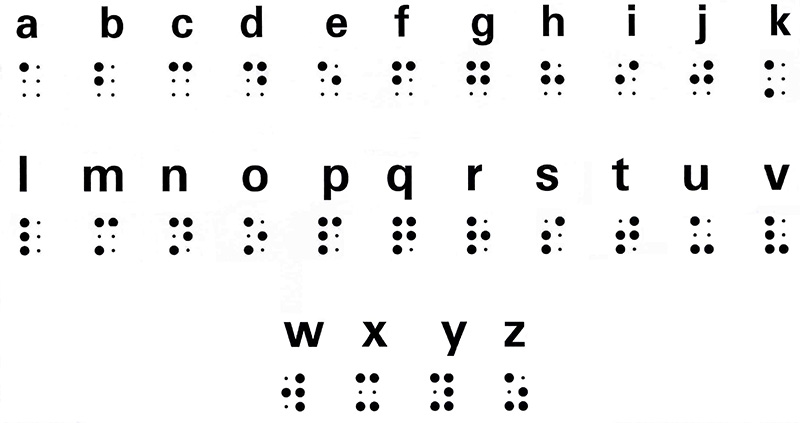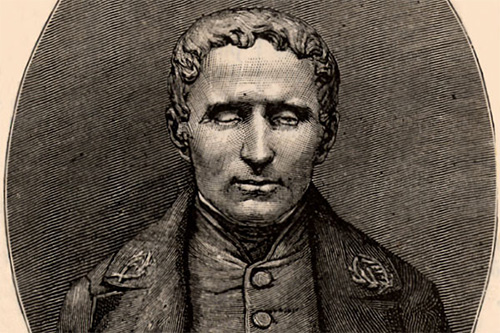We are all reading addicts for a reason! We possess the gift of sight and hence the opportunity to read. Whether it’s our favourite books, daily news or even this blog; we can read it all. But how can the magic of books reach people with loss of vision? How can talented musicians train if they can’t read sheet music? How can people go about their lives if they do not have the ability to read forms, agreements, letters or menu cards?
According to Louis Braille whom we know as the Father of Braille, access to communication in the widest sense was access to knowledge which is of vital importance to the blind or visually impaired. The creation and use of Braille has brought literacy and independence to many across the world.
Surprisingly, the system of reading using fingertips was initially not used by anyone who was blind. In the early 1800s, a Frenchman, Charles Barbier, serving in Napolean’s army, developed a unique system called ‘night writing’ so that soldiers could read and write messages to each other, without the use of a light that could give away their position. Barbier based his ‘night writing’ system on a raised 12-dot cell; two dots wide and six dots tall. Each dot or combination of dots within the cell represented a letter or a phonetic sound.
Louis Braille, born in Coupvray, France, was blinded at the age of 3 after he accidentally stabbed himself in the eye with an awl in his father’s leather workshop. At eleven years old, Braille was inspired to modify Charles Barbier’s night writing code in an effort to create an efficient written communication system for fellow blind individuals. At that time, he was enrolled at the National Institute for the Blind in Paris and spent the next nine years developing and refining the system of raised dots that has come to be known by his name, Braille. The ‘night writing’ code was now based on cells with only 6-dots instead of 12 so that a fingertip could cover the entire cell unit with one impression and move rapidly from one cell to the next. He also modified the writing system to be based on letters instead of sounds. Louis Braille published the first Braille book in 1829. In 1837, he added to his system, symbols for math and music.

Since its inception, the Braille system has been more or less the same. However, there have been some small modifications to the system, such as the addition of contractions representing groups of letters or whole words that appear frequently in a language. The use of contractions permits faster braille reading and helps reduce the size of braille books.
Braille encompasses 3 types or ‘grades’. Grade 1 braille consists of the 26 standard letters of the alphabet and punctuation. It is mainly used by people who have just started reading braille. Grade 2 braille consists of the 26 standard letters of the alphabet, punctuation and contractions. Books, public signages, restaurant menus, and most other braille materials are written in Grade 2 braille. Grade 3 braille is considered to be braille “shorthand”, with entire words shortened to only one or just a few letters. It has never been standardized so it is not used in any official publications but only in personal letters, diaries, and notes. Braille can be written with a Braillewriter (similar to a typewriter) or by using a pointed stylus to punch dots through paper, using an instrument called a Braille slate, which has rows of small cells in it as a guide. Braille is not a language, but a writing system that can be transcribed in English, Spanish, French, German, Italian, and many more languages.
Braille’s system was ready when he was just 15 years old. He presented it to his school where it was soon adopted. But though Louis Braille was a respected teacher, musician and researcher, his system of reading and writing with raised dots was not very widely accepted in his own time. Today, Braille is used by blind people in almost every language in the world, but it became widespread only after Braille’s death which was caused by tuberculosis at the mere age of 43.
The use of audio books is on the rise as well now but Braille brought the written word to millions of blind people across the world, enlightening their lives with knowledge and empowering them in their academic and social journey.


Jurgis Bielinis and the Day of the Book Smugglers

23 Emotions People Feel But Are Not Able To Explain

50 British Sayings That Are Going Out of Fashion

Italian dictionary under fire for sexist synonyms

6 product names guaranteed to make language nerds laugh

The letters abandoned by the modern English language
